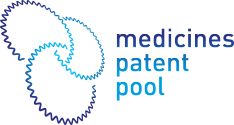Seizing New Opportunities to Accelerate Progress Towards 90-90-90
4 December 2017
By Badara Samb, Director, Office of Special Initiatives, UNAIDS
As the 19th International Conference on AIDS and STIs in Africa (ICASA) opens, Africa has much to celebrate but also faces important challenges in its quest to end the AIDS epidemic. Fortunately, important new opportunities have emerged that have the potential to dramatically strengthen Africa’s ability to make AIDS a thing of the past.
End-of-year results from 2016 on the HIV treatment cascade in Africa demonstrate the region’s enormous progress towards the 90-90-90 target. As a region, east and southern Africa appear on track to reach the 90-90-90 target by 2020. And in west and central Africa and the Middle East and north Africa, where progress has historically lagged, substantial gains have been made in HIV diagnosis, treatment uptake and rates of viral suppression.
But much remains to be done. Further gains in HIV testing are essential, linkage to care must be assured, support is needed to help people remain in care, and differentiated, community-centred care needs to be mainstreamed across the regional response.
In recent weeks, at least three major new opportunities have emerged to quicken the pace of progress towards 90-90-90. I expect each of these to be featured at the ICASA meeting in Abidjan.
The first is the endorsement by the African Union in July of the catch-up plan for west and central Africa. This plan was motivated by recognition of the lagging progress towards 90-90-90 in west and central Africa: While 50% of all people living with HIV in east and southern Africa were virally suppressed in 2016, only 25% had achieved viral suppression in west and central Africa. The catch-up plan aims to increase the number of people receiving treatment from 1.8 million to 2.9 million by mid-2018. With the assistance of UNAIDS and other partners, countries in west and central Africa are now developing and implementing country operational plans to make the catch-up plan a reality. At ICASA, we will hear reports of how countries in west and central Africa are implementing these urgent efforts to get on track to reach 90-90-90.
The second new opportunity is the emergence of a new regional initiative, also endorsed by the African Union, to recruit, train and deploy two million community health workers by 2020. Experience in Ethiopia and other countries has shown that well-trained, compensated and fully integrated community health workers have a unique ability to reach remote and marginalised communities who frequently fail to access health services. This new initiative will have the added benefit of providing well-paying jobs of social importance for the region’s largest-ever generation of young people. ICASA will feature presentations and panel discussions on the critical, but still under-utilised role of community health workers in the HIV response as well as discussions regarding how different countries in Africa are taking action to build a robust community health workforce.
Last, but certainly not least, in September a breakthrough pricing agreement was announced for the first affordable, generic, single-pill HIV treatment regimen containing dolutegravir (DTG). This agreement was made possible in part due to the existing licensing agreements between the Medicines Patent Pool and ViiV Healthcare. This new regimen (known as TLD) will not only be less expensive than standard first-line treatment, but it is expected to be far more durable and associated with fewer side effects. The result of political leadership by the governments of Kenya and South Africa and the proactive involvement of numerous international partners, this agreement is expected to save more than US$50 billion in treatment costs over the next six years. Countries face important decisions on how best to integrate uptake of this new regimen in national treatment programmes and how or whether to switch patients on other regimens to the superior TLD. ICASA will include considerable discussions about national AIDS programmes, international partners and civil society regarding how best to leverage this important new opportunity to save treatment resources, improve treatment outcomes and reduce future demand for more costly second- and third-line regimens.
Given these new opportunities to sharply accelerate gains towards 90-90-90, I am very much looking forward to this week’s discussions at ICASA in Abidjan.







